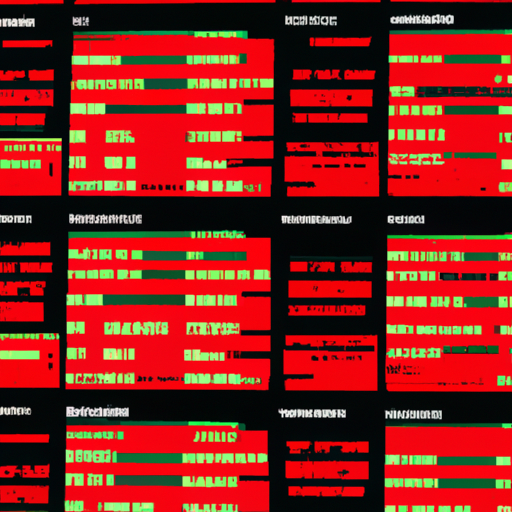What Role Do IT Services Play In Dark Web Monitoring?
Are you curious about the vital role that IT services play in the realm of dark web monitoring? The world of the dark web is a mysterious and dangerous place, filled with illicit activities and anonymity. In this article, we will explore how IT services are the unsung heroes behind the scenes, diligently working to keep individuals and organizations safe from the threats lurking in the shadows of the internet. With their expertise and advanced tools, IT services are pivotal in the constant battle against cybercrime on the dark web. So, let’s dive into the fascinating world of dark web monitoring and discover the crucial role that IT services play in ensuring our online security.
Understanding Dark Web Monitoring
Defining the dark web
The dark web refers to a hidden part of the internet that is not indexed by search engines and requires special software to access. It is known for illegal activities, such as the sale of stolen data, drugs, weapons, and other illicit goods. The anonymity and lack of regulation make it a breeding ground for cybercriminals.
Explaining dark web monitoring
Dark web monitoring is the practice of monitoring the dark web for any mention or activities related to an organization or individual. It involves scanning underground forums, marketplaces, and other hidden websites to identify potential threats or compromise of sensitive data. By monitoring the dark web, companies can take proactive measures to protect themselves against cyber threats and prevent potential data breaches.
The Importance of Dark Web Monitoring
Protecting against cyber threats
Cyber threats are constantly evolving, and traditional security measures may not be enough to safeguard against them. Dark web monitoring allows organizations to stay ahead of cybercriminals by monitoring their activities and identifying potential threats before they materialize. By actively monitoring the dark web, companies can gain valuable insights into the techniques and tools used by hackers, allowing them to strengthen their defenses and protect their systems.
Preventing data breaches
Data breaches can have severe consequences for organizations, leading to financial loss, damaged reputation, and legal repercussions. Dark web monitoring can help organizations identify if their sensitive data has been compromised and is being traded or sold on the dark web. This early detection enables organizations to take immediate action, such as changing passwords or implementing additional security measures, to mitigate the impact of a potential data breach.
Safeguarding sensitive information
Organizations often handle sensitive information, such as customer data, financial records, or intellectual property. Dark web monitoring is crucial in safeguarding this sensitive information. By monitoring the dark web, organizations can identify if any of their sensitive data has been exposed and take steps to protect it. This proactive approach can prevent the misuse of sensitive information and ensure compliance with data protection regulations.
Key Features of IT Services for Dark Web Monitoring
Real-time monitoring
Real-time monitoring is a crucial feature of IT services for dark web monitoring. It involves continuously scanning the dark web to identify any mention or activities related to an organization or individual. Real-time monitoring allows organizations to quickly detect potential threats or compromised data, enabling timely response and mitigation.
Advanced threat intelligence
IT services for dark web monitoring provide advanced threat intelligence capabilities. This includes analyzing the gathered data from the dark web to identify trends, patterns, and potential security risks. By leveraging advanced analytics and machine learning algorithms, organizations can gain deeper insights into the tactics and techniques used by cybercriminals and adapt their security measures accordingly.
Data breach notification
IT services for dark web monitoring include data breach notification mechanisms. These mechanisms immediately alert organizations if their sensitive data has been compromised or is being traded on the dark web. This notification allows organizations to take swift action to minimize the impact of the breach and protect their data, systems, and customers.
Dark web intelligence gathering
IT services for dark web monitoring encompass intelligence gathering capabilities specific to the dark web. This includes monitoring underground forums, marketplaces, and other hidden websites to collect information about potential threats or compromised data. By gathering intelligence from the dark web, organizations can detect emerging threats, understand the methods used by cybercriminals, and strengthen their overall cybersecurity posture.
Different Types of IT Services for Dark Web Monitoring
Managed Security Services
Managed Security Services (MSS) providers offer comprehensive dark web monitoring solutions as part of their offerings. These services include Real-time monitoring, advanced threat intelligence, and data breach notification capabilities. MSS providers have dedicated teams of security professionals who continuously monitor the dark web for any potential threats or compromised data, providing organizations with round-the-clock protection.
Security Information and Event Management (SIEM)
SIEM solutions include dark web monitoring as a component of their overall cybersecurity capabilities. SIEM systems collect, analyze, and correlate security events from various sources to identify potential security threats. Dark web monitoring integrated into SIEM solutions allows organizations to receive real-time alerts and insights on any activities related to their organization or sensitive data on the dark web.
Network Monitoring Services
Network monitoring services include dark web monitoring as part of their network security offerings. These services monitor network traffic, detect anomalies, and identify potential security threats. By extending their monitoring capabilities to the dark web, organizations can proactively identify any unauthorized access attempts or data leaks originating from the dark web.
Threat Intelligence Platforms
Threat intelligence platforms provide organizations with aggregated and analyzed threat intelligence data from various sources, including the dark web. These platforms offer proactive threat detection by identifying and correlating indicators of compromise, malicious domains, and other threat-related information. By leveraging threat intelligence platforms, organizations can stay informed about potential threats on the dark web and take proactive measures to mitigate risks.
Benefits of IT Services for Dark Web Monitoring
Proactive threat detection
IT services for dark web monitoring enable proactive threat detection by continuously scanning the dark web for any potential threats or compromised data. By detecting potential threats early on, organizations can take immediate actions to prevent cyber-attacks, data breaches, or other malicious activities. This proactive approach helps organizations stay one step ahead of cybercriminals.
Faster incident response
With real-time monitoring and timely alerts, IT services for dark web monitoring facilitate faster incident response. Organizations can quickly identify and analyze potential threats or compromised data, enabling them to respond promptly and effectively. This swift incident response minimizes the impact of security incidents and reduces the risk of data loss or financial loss.
Improved compliance
IT services for dark web monitoring contribute to improved compliance with data protection regulations. By actively monitoring the dark web, organizations can identify any exposure or trading of sensitive data, ensuring compliance with regulations like GDPR, HIPAA, or PCI DSS. This helps organizations avoid hefty fines, legal repercussions, and damage to their reputation.
Enhanced cybersecurity posture
By leveraging IT services for dark web monitoring, organizations can enhance their overall cybersecurity posture. These services provide valuable insights into emerging threats, techniques used by cybercriminals, and vulnerabilities that need to be addressed. With this information, organizations can strengthen their security infrastructure, update policies and procedures, and implement effective security controls to mitigate risks effectively.
Challenges in Dark Web Monitoring with IT Services
Navigating the complex dark web landscape
The dark web is a complex and ever-changing landscape, making it challenging to navigate and extract actionable intelligence. IT services for dark web monitoring need to constantly adapt to the evolving tactics and technologies used by cybercriminals. It requires expertise and specialized tools to effectively gather and analyze the data from the dark web.
Identifying legitimate threats
Another challenge in dark web monitoring is identifying legitimate threats amidst the noise. The dark web is filled with false, exaggerated, or outdated information. IT services need to have robust systems in place to filter out noise and accurately identify genuine threats or compromises that pose a real risk to organizations.
Analyzing vast amounts of data
Dark web monitoring generates a vast amount of data that needs to be analyzed and correlated to extract actionable intelligence. IT services must have advanced analytics capabilities and machine learning algorithms to handle large volumes of data and identify meaningful patterns or anomalies effectively. This requires expertise in data analytics and the ability to make sense of complex data sets.
Staying updated with evolving tactics
Cybercriminals are continuously evolving their tactics and techniques to stay ahead of security measures. IT services for dark web monitoring must stay updated with the latest trends in cybercrime and adapt their monitoring strategies accordingly. This requires ongoing research, collaboration with industry experts, and continuous improvement of monitoring tools and techniques.
Choosing the Right IT Services for Dark Web Monitoring
Assessing organizational needs
To choose the right IT services for dark web monitoring, organizations need to assess their specific needs and requirements. This includes understanding the sensitivity of their data, their industry regulations, and their risk appetite. By identifying their unique needs, organizations can select IT services that align with their overall cybersecurity strategy.
Evaluating service providers
When choosing IT services for dark web monitoring, organizations should carefully evaluate different service providers. This includes considering their expertise, experience, and reputation in the field of dark web monitoring. It is essential to choose a service provider that has a proven track record and can provide comprehensive monitoring capabilities.
Considering scalability
Organizations should consider the scalability of IT services for dark web monitoring. As their business grows and evolves, their monitoring needs may change. It is important to choose IT services that can scale accordingly and adapt to changing requirements. This ensures that organizations can continue to effectively monitor the dark web as their operations expand.
Ensuring compatibility with existing systems
IT services for dark web monitoring should be compatible with the organization’s existing systems and infrastructure. It is important to consider how the monitoring tools integrate with other security solutions, such as SIEM systems or network monitoring tools. Compatibility ensures seamless integration and efficient management of the overall cybersecurity infrastructure.
Best Practices in Implementing IT Services for Dark Web Monitoring
Developing a comprehensive monitoring strategy
To effectively implement IT services for dark web monitoring, organizations should develop a comprehensive monitoring strategy. This strategy should outline the goals, scope, and methodology of dark web monitoring. It should also define the roles and responsibilities of the individuals involved in monitoring and incident response. A well-defined strategy sets the foundation for successful implementation.
Establishing clear policies and procedures
Clear policies and procedures are crucial in implementing IT services for dark web monitoring. These policies should outline how the organization will handle potential threats or compromised data identified through dark web monitoring. They should also define the steps to be taken in incident response, including communication protocols, escalation procedures, and mitigation measures. Clear policies and procedures ensure consistent and efficient handling of security incidents.
Training employees on dark web risks
Employee awareness and training are essential components of dark web monitoring. Organizations should provide regular training sessions to educate employees about the risks and threats associated with the dark web. This includes teaching them about phishing attacks, password security, and safe browsing practices. By empowering employees with knowledge, organizations can create a strong human firewall against dark web threats.
Regularly updating monitoring tools
IT services for dark web monitoring rely on monitoring tools and technologies. It is essential to regularly update these tools to stay ahead of evolving threats and to ensure efficient monitoring. This includes updating threat intelligence databases, enhancing analytics capabilities, and incorporating the latest detection techniques. Regular tool updates keep the monitoring system robust and effective.
Case Studies: Successful Implementation of IT Services for Dark Web Monitoring
CASE STUDY 1: Company A improves threat detection and response
Company A, a multinational financial institution, implemented IT services for dark web monitoring to enhance its cybersecurity posture. By continuously monitoring the dark web, they were able to detect potential threats in real-time. This allowed them to respond promptly, mitigating the impact of security incidents and minimizing the risk of data breaches. The implementation of IT services for dark web monitoring significantly improved their threat detection and response capabilities.
CASE STUDY 2: Organization B mitigates data breach risks
Organization B, a healthcare provider, faced the challenge of protecting sensitive patient data from cyber threats. By implementing IT services for dark web monitoring, they were able to proactively identify any exposure or trading of patient data on the dark web. This early detection enabled them to take immediate actions, such as implementing stronger access controls and data encryption, minimizing the risk of data breaches and ensuring compliance with HIPAA regulations.
CASE STUDY 3: Institution C enhances cybersecurity posture
Institution C, a government agency, sought to strengthen its cybersecurity posture against emerging cyber threats. By leveraging IT services for dark web monitoring, they gained valuable insights into the tactics and techniques used by cybercriminals. This allowed them to update their security infrastructure, revise policies and procedures, and provide targeted training to their employees. The implementation of IT services for dark web monitoring greatly enhanced their overall cybersecurity posture.
CASE STUDY 4: Agency D achieves compliance and regulatory requirements
Agency D, a financial services agency, faced strict compliance and regulatory requirements, including GDPR and PCI DSS. By implementing IT services for dark web monitoring, they were able to identify any exposure or trading of customer data on the dark web. This enabled them to promptly address any data breaches, ensure compliance with regulations, and mitigate the risk of fines or legal repercussions.
Future Trends in IT Services for Dark Web Monitoring
Artificial Intelligence and Machine Learning
Artificial intelligence (AI) and machine learning (ML) will play a significant role in the future of IT services for dark web monitoring. AI and ML algorithms can analyze vast amounts of data from the dark web, identify meaningful patterns, and detect potential threats with higher accuracy. This enables organizations to stay ahead of cybercriminals and effectively protect their data and systems.
Blockchain-based monitoring solutions
Blockchain technology has the potential to enhance the security and transparency of dark web monitoring. By leveraging blockchain, organizations can create a tamper-proof and decentralized record of dark web activities. This improves the trustworthiness of the gathered intelligence and ensures the integrity of the monitoring process.
Automated threat hunting
Automated threat hunting tools and technologies will become more prevalent in the future of dark web monitoring. These tools leverage AI and ML algorithms to proactively search for potential threats on the dark web. By automating the threat hunting process, organizations can save time and resources while ensuring comprehensive monitoring.
Integration with cloud security platforms
As organizations increasingly adopt cloud computing and storage solutions, integration with cloud security platforms will become vital in dark web monitoring. Cloud security platforms can leverage their extensive infrastructure and resources to gather and analyze data from the dark web. This integration allows organizations to benefit from scalable and efficient monitoring capabilities.
In conclusion, IT services play a crucial role in dark web monitoring by enabling organizations to protect against cyber threats, prevent data breaches, and safeguard sensitive information. The key features of IT services for dark web monitoring include real-time monitoring, advanced threat intelligence, data breach notification, and dark web intelligence gathering. Different types of IT services, such as managed security services, SIEM solutions, network monitoring services, and threat intelligence platforms, offer comprehensive dark web monitoring capabilities. The benefits of implementing IT services for dark web monitoring include proactive threat detection, faster incident response, improved compliance, and enhanced cybersecurity posture. However, organizations face challenges in navigating the complex dark web landscape, identifying legitimate threats, analyzing vast amounts of data, and staying updated with evolving tactics. When choosing IT services for dark web monitoring, organizations should assess their needs, evaluate service providers, consider scalability, and ensure compatibility with existing systems. Best practices in implementing IT services include developing a comprehensive monitoring strategy, establishing clear policies and procedures, training employees on dark web risks, and regularly updating monitoring tools. Case studies highlight successful implementations of IT services for dark web monitoring, and future trends include artificial intelligence and machine learning, blockchain-based monitoring solutions, automated threat hunting, and integration with cloud security platforms. With the ever-increasing sophistication of cyber threats, IT services for dark web monitoring are essential for organizations to maintain their cybersecurity resilience and protect their valuable information.








